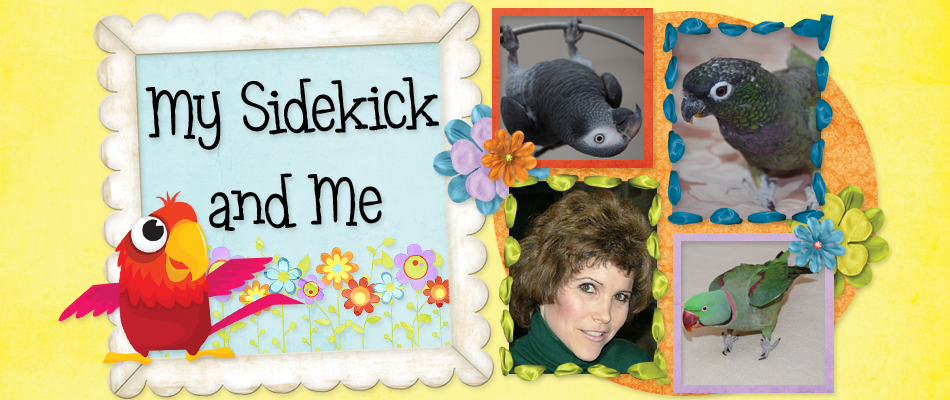It'd be hard to live around kids and not have tried a box of Girl Scout cookies. Well, now the local 4-H hopes dog, cat and horse owners will become just as familiar with Best in Show pet treats.
The human grade treats (except for the ones made for cats) have a two year shelf life and come in different flavors. Dogs can have their choice of cheese & bacon, peanut butter honey or cheddar cheese.
Cost is $4 per package and half of that goes back to the youth development organization run by the U.S. Department of Agriculture. So far only the Hamilton County 4-H is selling the treats locally.
To order a package, you need to call 513-946-8989 by October 28, 2009. You will need to pick-up your order at the 4-H central office - 110 Boggs Lane (45246) - after November 20 unless other arrangements have been made.
Tuesday, October 20, 2009
Treat Your Pet And Help Raise Money For 4-H
Tuesday, October 13, 2009
Teacup Pigs - An Unusual Pet
These little guys are absolutely precious. Of course they are babies. The breeder says they get about knee high.
Visit msnbc.com for Breaking News, World News, and News about the Economy

Sunday, October 11, 2009
Enrichment Ideas For Parrots
In my last post, I spoke with Robin Shewokis of The Leather Elves about parrot enrichment. Providing stimulating activities – that may include chewing, taking apart, making a noise, shredding, or playing - for our companion pets is important to increase independent play and decrease ‘unacceptable’ behaviors such as screaming, feather destruction, and the constant need for owner attention. Remember, these are animals that, in the wild, would spend hours of each day foraging for food, flying, raising young, and watching out for predators.
Some things I do:
Beads & more bea
 ds – I buy hemp string and small beads in bulk at the local craft store. I make MANY strands of this – tying a note in between the beads – and hang them all over their cages, inside and out. By the end of each day, all of the strands have been chewed on and go in their recycle bin. Chester also loves to mouth beads for some reason, and sort through the shapes and colors. I put beads in a bowl for him. I also found he eats his pellets better when I include beads in his pellet bowl.
ds – I buy hemp string and small beads in bulk at the local craft store. I make MANY strands of this – tying a note in between the beads – and hang them all over their cages, inside and out. By the end of each day, all of the strands have been chewed on and go in their recycle bin. Chester also loves to mouth beads for some reason, and sort through the shapes and colors. I put beads in a bowl for him. I also found he eats his pellets better when I include beads in his pellet bowl.Paper for shredding – For Chester, I roll up some of a phone book or sections of a newspaper and put a plastic chain link around it. (Please do not tie a string around the paper. I did this until one day I saw it around Chester’s neck.)

Blocks of wood – I go to the local home goods store and get ‘safe’ scrap wood. Then I cut it into small pieces, drill a hole in it and put it on a string.
Cardboard boxes, paper towels and more – Think of this as recycling. I put beads inside cream cheese boxes. I wrap an almond in a toilet paper roll for Chester & Dreyfuss. I give Chester yogurt containers to chew (or cut a hole through 2 of them, stuff with something, then tie to a string).
These are just a sample of some ideas. I’d love to hear about what you do.

Saturday, October 3, 2009
Creating Enrichment For Pet Birds
They train vultures, eagles, cranes, macaws, cockatoos and African Greys. They work in bird shows, at zoos and parks, and even in wildlife rehabilitation using the most positive strategies to teach behavior. And this past February, they came to Cincinnati to share their knowledge at the International Association of Avian Trainers and Educators (IAATE).
I met Robin Shewokis through IAATE. Owner of The Leather Elves, she helps zoos, other facilities, and companion pet owners internationally to create a more stimulating environment for animals. She also develops new enrichment products for companion parrots that will stimulate naturalistic behavior.
In Robin’s conference workshop, we divided into groups based on bird species and brainstormed how to create the most sensory stimulating environment (keeping safety in mind) based on the birds natural activity. We were asked to generate ideas focusing on dietary, social, visual, olfactory (smell), auditory, tactile, and training/exercise categories. Gosh, how often as a bird owner, do we take the time to consider all the ways we can offer our pets a more enriching quality of life?
Robin and I spoke re cently. I thought I’d share some of what we talked about.
cently. I thought I’d share some of what we talked about.
What are some considerations companion parrot owners should consider when it comes to creating an enriching environment?
Robin: The key is knowing what your bird’s natural history is before knowing what type of enrichment to provide. For example, cockatiels are ground foragers so putting foraging activities high in the cage isn’t the best idea. If your bird in the wild would spend a lot of time in flight, then you want to make sure it has plenty of space.
Another big consideration is providing activities that stimulate as many of the senses as possible, and giving your pet a variety of choices. It doesn’t need to be expensive. Recyclables create great toys for birds.
It’s also important to know your specific bird so that you can tailor its environment based on its individual needs. A lot of times people inundate their bird with things their bird has never interacted with before. If the bird doesn’t know how to interact with something, its owner may need to teach it.
How can a parrot owner learn about his/her bird’s natural behavior?
Robin: The internet is a great source. There is also a book, ‘Parrots of the World’ by Joseph Foreshaw, that gives information on every species.
What is foraging?
Robin: The definition of foraging is making a search for food. It is a natural behavior for birds, but in captivity it doesn’t need to translate into a big giant path to getting an almond. In the wild a bird will fly from here to there, perch, find something intriguing and fly again. A foraging activity in a cage can be as simple as having food in different stations or wrapped in paper. Food can be placed in toys or stuffed into things.
Talk about the ‘big bang’ response.
Robin: It easy to fall into the ‘favorite’ trap when it comes to parrot ‘toys’. Initially when you give a toy to your bird, you may get a big bang response because it’s new and stimulating. Your bird my love it and play with it constantly, but over time, that toy loses its ‘newness’ and allure. It’s important to offer your bird a variety of toys and not leaving them in the cage until they become cage furniture.
Listen to Robin on Pet Life Radio.











